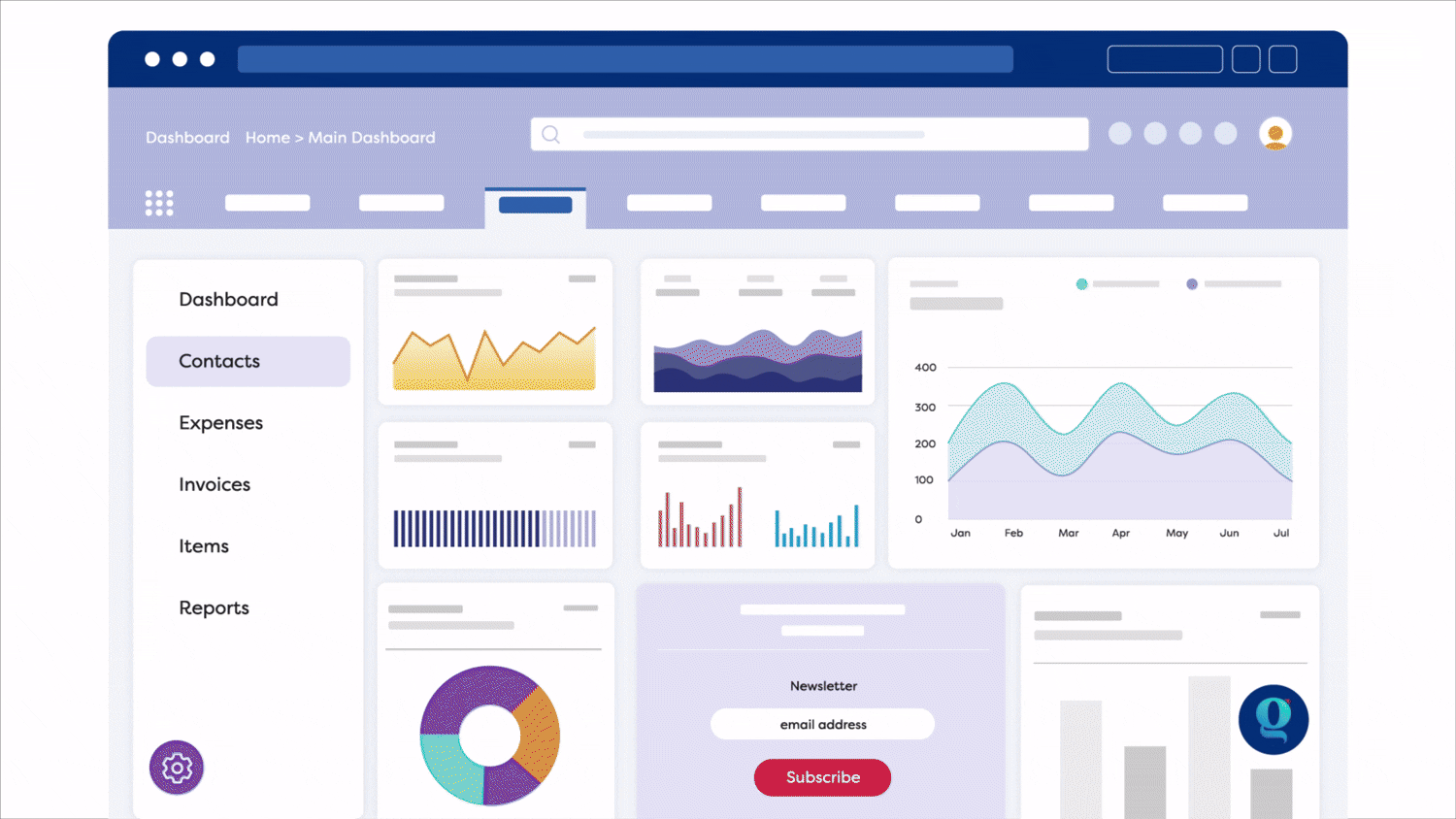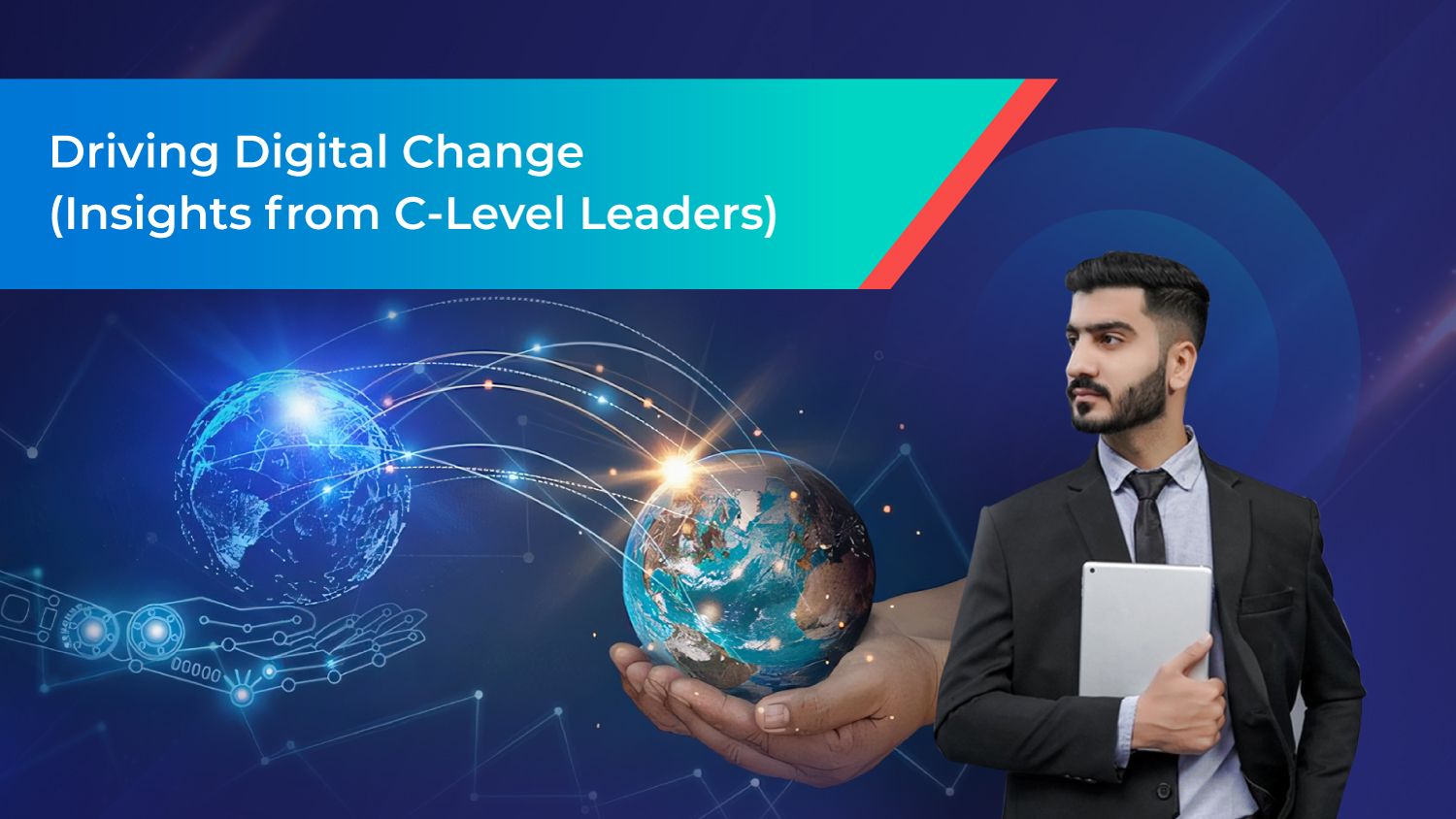Digital transformation feels like an endless cycle of change, doesn’t it?
It’s easy to get caught up in small digital changes.
Updating a system here, tweaking an internal process there.
All while losing sight of whether you’re moving toward the bigger picture.
Many C-level leaders face the same challenge. Incremental changes often bring employee resistance, highlight outdated technology, and reveal misaligned strategies. Over time, these issues stall momentum and weaken the true impact of your digital transformation efforts.
In our conversations with industry leaders, we heard similar concerns. That’s why we created this blog to re-assess the nature of digital change & explore how organization leaders can approach it to achieve successful digital transformation.
Here's the agenda:
- What is Digital Change?
- Digital Change Vs Digital Transformation
- Why Human-Centric Digital Change is Key
- How can C-level leaders choose the right technology for their organization?
- How can C-level leaders manage resistance to change?
- Digital Change Done Right: Bajaj Finance Case Study
- Editor's Note
- FAQs
You’ll leave with practical insights that will help you navigate the digital change journey and make it work for your long-term goals.
What is Digital Change?
When we posed this question to Mandar Sahasrabudhe, CTO of Kirloskar, he put it simply:
"Going digital is a change in itself. But when you take a structured approach to help end-users transition smoothly from an old system to a new one, that’s digital change."
Here’s an elaboration:
Digital change is the shift from traditional processes to technology-driven solutions as part of a broader digital transformation strategy. But just having new tools isn’t enough—people need to actually use them.
Digital change management helps with this by guiding employees and customers through the transition, addressing challenges, and providing support through e-learning solutions, digital adoption tools, and training programs, to maximize the impact of transformation initiatives.
Digital Change Vs Digital Transformation
Let’s bust a common myth: Leaders often treat "digital transformation" and "digital change" as synonyms, but there's a difference.
For example: Rolling out a cloud-based CRM is a digital change. Shifting your entire customer engagement strategy around data-driven insights? That’s digital transformation.
Why Human-Centric Digital Change is Key
Direct Banking, a highly successful Dutch-based bank, built its reputation on exceptional customer service, allowing service agents to engage freely with customers rather than relying on scripts.
Over 85% of its customers recommended the bank to others.
Then came a new CEO. Smart. Tech-driven. Focused on cutting costs. His big idea? Voice automation. AI would handle calls, reducing expenses and automating service.
But there was a problem.
Senior executives, who had spent years shaping the bank’s customer-first culture, saw the risk. “This could ruin what makes us special,” they warned.
Even the tech vendors said the plan was too ambitious. But the CEO pushed forward, convinced it would work.
However, they got brutal feedback from the customer focus groups. They didn’t want automation. They wanted human connection.
So, here's your first PTR (point to remember):
Innovation has to be brand-centric. Even the most well-intentioned efforts at efficiency can collapse if they undermine what customers care about most.
This CEO chose AI—among many possible technologies. But was it the smartest move? Apparently not.
Choosing poorly can have consequences, so we asked Parag Topre, Organizational Transformation Consultant at Deloitte Consulting, for key factors to help you choose wisely.
How can C-level leaders choose the right technology for their organization?
Parag pointed out that successful digital transitions are not just about adopting the latest tools but about strategically assessing and integrating them.
From his experience working with C-level executives, Parag identified five critical factors that influence technology choices:
1/ Assessment of Current Systems
Are you fully using your current tools, or are you replacing them prematurely?
- Many organizations invest in new CRM or ERP systems without fully utilizing the capabilities of their existing software.
- A global retailer, for instance, realized they were only using 40% of their legacy ERP system’s functionalities before considering an upgrade.
- By optimizing the existing system first, you can save millions and improve efficiency without a major overhaul.
🔹 Key takeaway: Before replacing existing systems, assess whether optimizing or integrating them could deliver the same results more efficiently. You may still need new technology to support optimization but narrowing your focus helps you choose smarter from a more relevant set of tools and platforms.
2/ Scalability
Will your chosen technology support long-term growth, or will it become obsolete as demands increase?
- Companies must take a long-term view when selecting technology, or risk being left behind as the digital landscape shifts.
- Netflix started as a DVD rental company but quickly shifted to streaming as technology evolved. Their cloud-based infrastructure allowed them to scale from a few thousand users to hundreds of millions worldwide.
- Compare this to Blockbuster (an American multimedia brand and retailer chain of home video (DVD, VHS), and video game rental services), which failed to adapt and collapsed under the weight of an outdated business model.
🔹 Key takeaway: Invest in systems that can scale with your growth, not just serve your immediate needs.
3/ Market Reputation & Support
Are you partnering with vendors who offer reliable after-sales support, or risking downtime and user frustration?
- Organizational leaders should carefully vet technology vendors, as these partnerships are long-term commitments that require trust and support.
- A healthcare provider adopted a new patient record system but later found that the vendor lacked proper customer support. As a result, doctors and nurses faced delays in accessing records, impacting patient care.
- Meanwhile, another hospital chose an EMR system with 24/7 support and a strong reputation, making sure there’s seamless usage.
🔹 Key takeaway: A vendor’s reputation and support are just as critical as the technology itself. Check their data security practices, explore customer reviews on platforms like G2 and Capterra, and take advantage of free trials when possible.
4/ Feasibility of Implementation
Are you prepared for the complexities of system migration and minimizing business disruption?
- Enterprise leaders need to evaluate their capacity for implementation. If internal capabilities fall short, they should consider out-of-the-box solutions that minimize downtime and drive maximum impact.
- When a leading bank decided to switch to a new core banking system, they underestimated the complexity of migrating historical data. The transition led to multiple system downtimes, affecting thousands of customers.
- On the other hand, a competing bank phased its implementation in stages, reducing risks such as frustrated customers and lost business.
🔹 Key takeaway: When you choose a technology, you’re committing to a journey of adoption. A phased rollout helps you validate whether that choice actually fits your people, processes, and goals. If the tech struggles to deliver value even in a controlled rollout, or if employee pushback is high, you have the chance to reassess or pivot—before you've invested too much.
5/ Training & Upskilling
Are your employees equipped to leverage new tools, or will lack of training lead to adoption failure?
- For digital change to succeed, user adoption needs to come first. Technology only delivers value when it’s understood and used easily.
- When Starbucks introduced its AI-driven scheduling system, baristas struggled because they weren’t properly trained. This led to scheduling conflicts and employee dissatisfaction.
- In contrast, Walmart rolled out VR-based training for store associates before implementing new checkout systems, leading to higher adoption rates and smoother operations.
🔹 Key takeaway: As soon as you finalize the best technology for you, think of how your end-users are going to adopt it. Invest in on-the-job training for frontline roles that need to apply knowledge quick.
PTR: The best leaders balance innovation with practicality when in performing digital change management. It’s a continuous commitment to evolve, adapt, and lead with agility.
Picked the right tech? Great—but that’s just half the battle.
Now comes the real challenge: getting your people to embrace it. Let’s talk about managing resistance the smart way.
How can C-level leaders manage resistance to change?
In the Gydebites podcast episode, Sameer Gupta, Head Digital & Transformation PMO at Hero Fincorp, mentioned that people don’t resist change in a personal capacity, they resist it because they fear their department will take a hit.
For higher management driving digital change, it’s important to be empathetic towards end-users. And, empathy comes from understanding that stepping out of a comfort zone is tough, especially when expertise has been built through years of repetition.
Let’s put ourselves in the end user’s shoes:
- When a new technology like Power BI is introduced, leadership aims to automate repetitive tasks, freeing up teams for more strategic work (a win for efficiency).
- But for someone who’s spent years manually crunching numbers in Excel, this shift can feel like a threat, as the software now automates tasks they once owned.
- This is where leaders need to focus on skill-building – helping users move from just data handling to extracting meaningful insights, turning automation into an opportunity, not a concern.
Even with the best intentions to upskill employees, C-level leaders need to recognize the mental barriers at play. Many employees quietly wonder, “Will this new tech make my job irrelevant?”—and that fear can’t be ignored.
Here are some measures (suggested by Mandar Sahasrabudhe) to ease this transition for your employees:
- Engage them early. Ask the department: What are your biggest pain points? Then, instead of enforcing a digital change solution, present it as a direct answer to their challenges, like "Here’s the problem you mentioned, and here’s how this new tech solution can fix it"
- Drive change from the top. Senior leadership that openly supports digital transformation and frames it around productivity gains and long-term ROI (not job cuts) help ease fears. This transparency builds trust and lowers resistance on the ground.
Before jumping onto every new technology trend, organizations must align it with real business needs and making sure end-users feel empowered, not threatened, by the shift.
When digital change is handled thoughtfully, with careful management of resistance and the right tools, the business results speak for themselves. See how this plays out in the case study below.
Bajaj Finance Case Study: Digital Change Done Right
Bajaj Finance, one of India's leading NBFCs, serves a diverse customer base, supported by a workforce of over 50,000 employees.
Their focus on digitally transforming the customer lending process led them to make a tech investment in Salesforce CRM. While Salesforce was a step in the right direction, the company soon realized that simply having the CRM wasn’t enough.
Soon, they faced operational challenges such as increasing number of loan files going on hold due to incomplete or incorrect information.
To address this, Bajaj Finance introduced an AI-powered Digital Adoption Platform (DAP) - Gyde, integrated directly into Salesforce.
This innovative solution provided field sales agents with on-demand, in-app training to field sales agents exactly when they needed it. Through the system, they gained access to:
- Audiovisual walkthroughs that guided them step-by-step within Salesforce, showing exactly where to click and how to complete lending forms with the correct information.
- Contextual help articles offering deeper insights into Salesforce features, addressing non-process-related questions that enhanced their understanding of the platform.

- Bite-sized training videos, available within the app and downloadable for offline access, ensuring that agents in areas with limited connectivity could continue learning uninterrupted.
With content available in multiple local languages, field agents could easily navigate and understand Salesforce. This just-in-time microlearning solution was not only scalable but also simple for employees to adopt, eliminating the need for IT support or the hassle of searching for solutions in external PDFs.

The results were immediate and impressive: loan file holds dropped from 18% to just 9.7% within three months.
By providing a simple yet effective solution that brought learning in the flow of work approach, Bajaj Finance successfully navigated digital change to drive efficiency and reduce operational friction.
Editor's Note
Driving digital change starts with the company's leadership.
Whether you're a CEO or part of the C-suite, your focus should be on aligning technology, people, and strategy. That means choosing the right tools, managing resistance with empathy, and setting a clear vision for transformation.
When this alignment clicks, it shows. According to Deloitte, companies that get it right see up to 14% higher market cap growth and that’s the kind of impact your company should be striving for.
So, start leading digital change, one intentional move at a time.
FAQs
Q1. What’s the best way to prioritize and manage multiple digital initiatives at once?
- Use frameworks like the Eisenhower Matrix to separate the urgent from the important. Identify the 20% of digital initiatives that will drive 80% of the value for your business, and double down on those.
- Use tools (like Jira, Asana, or Monday.com) to centralize your projects, keep teams aligned, and maintain visibility on all fronts.
- Delegate. Don’t micromanage. Empower your team leads to take ownership. You set the vision, and they execute it.
Q2. How do we modernize legacy systems without disrupting business continuity?
- Modernizing legacy systems doesn’t require an all-or-nothing approach. With strategic technical innovation, organizations can evolve without compromising day-to-day operations.
- Mandar Sahasrbuddhe, CTO at Kirloskar, shared a great example in the Gydebites Podcast. His company faced the issue of integrating 5G into legacy systems that only supported 3G or 4G. They worked with a startup to develop CPE software, which acted as a hotspot to convert 5G signals into Wi-Fi for their legacy modules.
- This approach shows us that you don't need to replace old systems entirely. By strategically investing in incremental solutions, businesses can phase out legacy technology without disrupting operations, all while embracing innovation.
Q3. How can we upskill our workforce quickly to meet new digital demands?
Focus on learning in the flow of work. Use microlearning for speed, digital adoption platforms like Gyde for real-time, in-app guidance, and tailor training by role. Add peer learning and make upskilling continuous.


